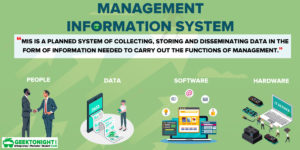What is E-Governance?
E-governance refers to the use of e-commerce and e-business technologies by governments and their departments to conduct their own business. E-governance also enables transactions to be conducted across an electronic network where the basic infrastructure is the same as that of e-business. E-governance has gained popularity in countries across the world as it enables governments to offer services efficiently, overcoming some of the hurdles posed by earlier manual methods.
In India, e-governance gained popularity with the spread of electronic networks and the availability of computing technology within government departments. The initial phase of computing created a set of applications for a department’s internal use – for personnel management, accounts, project management, and file management among others. Later, some citizen-facing services were set up that allowed citizens to access information and forms on computer terminals maintained at some offices.
Table of Content
Services of E-Governance
Services offered by e-governance are classified as:
Government to Business (G2B)
These services enable businesses to interact with the government smoothly and seamlessly. In India, the government provides an online interface for businesses to file their taxes online. This has been made mandatory in many states in India. Each business has to obtain a tax identification number and using this it can file taxes online thus reducing paperwork and delays associated with the former manual mode of tax filing.
Government to Citizen (G2C)
These services provide convenience to citizens in fulfilling various needs. For example, the Bhoomi system in the state of Karnataka in India allows farmers to access their land records through a computerized system.
The land records provide information on the nature of the land, its ownership, its location, farmed crops, and loans taken against the land. These records are used by farmers to mainly obtain bank loans for farming. The Bhoomi system maintains 20 million land records in its database, and the service is used by almost 800,000 farmers annually.
Another G2C example is the eSeva system in Hyderabad city in the state of Andhra Pradesh in India. eSewa enables citizens to pay utility bills conveniently; it provides a single point at which citizens can pay their electricity bills, water bills, road taxes, and other taxes required by the city. eSewa is widely popular as it has provided a convenient alternative to citizens who earlier had to travel to the different departments to pay their bills.
Government to Government (G2G)
These services are internal to government departments. Currently, in India, many data applications are shared between departments, and there is a common platform on which such sharing can occur. The systems here are not very different from MIS used in commercial firms and as such achieve the same ends. Many of these systems are built on the e-business architectures discussed above.
E-Governance Advantages
E-governance reduces transaction costs for governments. G2C systems in particular are very helpful to citizens as they save their time, effort, and money in getting the services they need. Transaction costs here have to be seen both from the supply-side and demand-side perspective. The government is the supplier of services for governance. For certain services, it is also a monopoly supplier (which means that only a government department can provide a particular service).
For the government, the ability to use electronic networks to reach out to thousands of citizens means reduced costs of physical infrastructure such as buildings and offices, and of personnel required to do the work. The e-governance applications also have the potential to reduce errors committed during processing as compared to manual processing. On the demand side are citizens who benefit from easier access, faster processing, more accurate transactions, and possibly lower costs.
The motivations for using e-governance are strong for countries across the world; however, they are different for developing and developed countries. In Denmark, for instance, which is a developed country, e-governance serves to reach out to a population that is small but widely dispersed, and also quite literate and with access to the internet.
More importantly, the Denmark government has to do this work with limited staff. In a developing country, like India, the staff is plenty, but the problems are more accessible and reach out to a vast population that is not computer literate. E-governance implementations in developing countries are not without their problems. They are prone to failure owing to a lack of use or support from various government changes. They tend to over or underestimate the needs of the population owing to which they end up being very expensive to sustain or unable to meet the needs of the citizens.
Management Information Systems
(Click on Topic to Read)
- What is MIS?
- Requirements of Management Information System
- What is Risk Management?
- Nolan Six Stage Model
- What is Cloud Computing?
- Types of Information Systems: TPS, MIS, DSS, EIS
- Information Systems in Organisations
- Challenges Faced by Manager in Managing Information Systems
- Decision Making With MIS
- What is E-Governance?
- What is Green IT?
- What is Smart Cities?
- What is IT Infrastructure?
- What is Cloud Computing?
- Cloud Service Models
- Cloud Migration Challenges
- Security Threats Faced by Organization
- Managing Security of Information Systems
- Software Project Management Challenges
- What is Data Management?
- What is Database?
- What is Data Warehouses?
- Enterprise Resource Planning Systems




